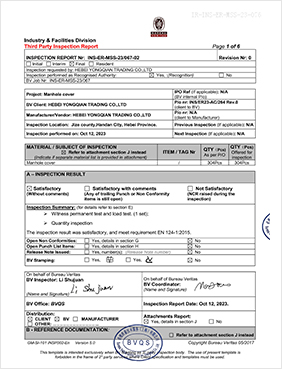ball valve butterfly
The Versatile Choice Ball Valves vs. Butterfly Valves
In the world of fluid control systems, the choice of valve can significantly impact both performance and efficiency. Among the plethora of options available, ball valves and butterfly valves are two of the most commonly used types. Each has its distinctive features, advantages, and suitable applications, making them valuable choices depending on specific requirements.
Understanding Ball Valves
Ball valves are quarter-turn valves that utilize a spherical disc, known as a ball, to control the flow of liquids and gases. The ball has a hole in the center, allowing fluid to flow through when the valve is in the open position; when turned to close, the solid part of the ball blocks the flow entirely. One of the critical advantages of ball valves is their ability to provide a tight seal, which minimizes leakage. This property is particularly beneficial in high-pressure applications.
Ball valves are available in various materials, including brass, stainless steel, and plastics, making them suitable for a wide range of media. Their straightforward operation mechanism allows for quick shut-off and allows them to maintain a reliable flow path with minimal pressure drop. For applications requiring frequent on-off cycling, ball valves are often the most efficient choice, as they can be operated quickly without the risk of accumulating debris within the valve mechanism.
Investigating Butterfly Valves
Butterfly valves, on the other hand, function quite differently. These valves consist of a rotating disc that is mounted on a shaft, which allows either partial or full closure of the pipeline. Unlike ball valves, butterfly valves use a thin disc that rotates to either block flow or allow it to pass. This design allows for significant space savings, making butterfly valves a popular choice in applications with space constraints.
ball valve butterfly

One of the key advantages of butterfly valves is their lightweight construction, which can significantly reduce the overall weight of the piping system. Furthermore, butterfly valves can be used in larger piping systems due to their ability to handle a larger diameter compared to ball valves. Their simple mechanism also allows for faster operation, making them suitable for applications where rapid throttling and control of flow are essential.
Choosing Between Ball and Butterfly Valves
When deciding between ball valves and butterfly valves, several factors come into play. Ball valves are often preferred in systems requiring a reliable, leak-proof seal, especially at high pressures. They excel in applications such as water and gas distribution, where the integrity of the seal is paramount. Their ability to handle high flow rates with minimal pressure drops also makes them ideal for industrial uses.
Conversely, butterfly valves may be the better choice for applications where space is limited, or where weight is a significant concern. Their ease of operation and relatively low cost also make them attractive for use in HVAC, water treatment, and other applications that do not involve a high-pressure environment. Additionally, butterfly valves are suitable for throttling applications where precise flow control is required.
Conclusion
In conclusion, both ball valves and butterfly valves play crucial roles in fluid control systems, and each has its unique advantages and ideal applications. The choice between the two ultimately depends on the specific requirements of the system, including pressure, flow rate, space constraints, and the type of media being controlled. Understanding the key features and functionalities of these valves will help engineers and designers make informed decisions that lead to optimal system performance and reliability. Whether one opts for the robust sealing capability of a ball valve or the compact design of a butterfly valve, both options offer valuable benefits that can significantly enhance fluid management in various environments.
-
The Smarter Choice for Pedestrian AreasNewsJun.30,2025
-
The Gold Standard in Round Drain CoversNewsJun.30,2025
-
The Gold Standard in Manhole Cover SystemsNewsJun.30,2025
-
Superior Drainage Solutions with Premium Gully GratesNewsJun.30,2025
-
Superior Drainage Solutions for Global InfrastructureNewsJun.30,2025
-
Square Manhole Solutions for Modern InfrastructureNewsJun.30,2025
-
Premium Manhole Covers for Modern InfrastructureNewsJun.30,2025
